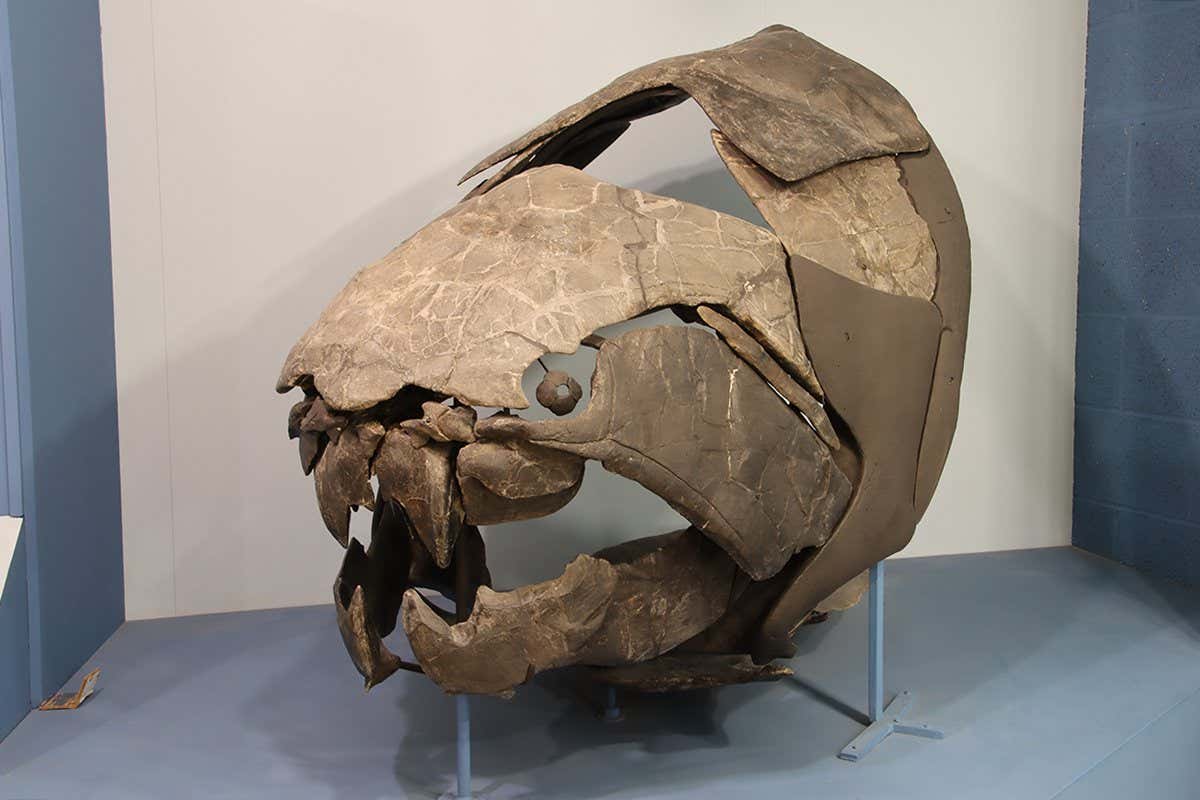Smaller Than Sharks: Unveiling the Ancient Reality of Tiny Fish
The ocean's depths hold countless mysteries, and among the most captivating are the ancient lineages of fish, some far smaller than their more famous, shark-sized counterparts. While giants like megalodon capture our imaginations, the evolutionary stories etched into the minuscule skeletons of ancient, tiny fish offer a profound understanding of life's tenacity and adaptation. This article delves into the fascinating world of these miniature marvels, revealing their surprising significance in the history of life on Earth.
The Surprisingly Rich Fossil Record of Tiny Fish
Contrary to popular belief, the fossil record isn't solely dominated by large, easily fossilized creatures. Paleontologists have unearthed a wealth of exceptionally preserved fossils of tiny fish, often found in fine-grained sedimentary rocks. These delicate remains provide invaluable insights into the evolutionary pathways that led to the diverse fish populations we see today.
Key Discoveries and Their Significance:
- Early Jawed Vertebrates: Fossils of tiny, jawed fish from the Silurian and Devonian periods (444-359 million years ago) are crucial for understanding the evolution of the jaw, a pivotal innovation in vertebrate history. These early examples, often only a few centimeters long, demonstrate the remarkable adaptations that allowed vertebrates to exploit new ecological niches.
- Miniaturization as an Evolutionary Strategy: Many ancient fish lineages show evidence of miniaturization, a process where body size decreases over evolutionary time. This phenomenon, while seemingly counterintuitive, offers several advantages, including reduced energy requirements, faster reproduction rates, and access to previously unavailable microhabitats.
- Understanding Ancient Ecosystems: The presence and abundance of these tiny fish fossils provide crucial information about the ancient aquatic environments they inhabited. Their dietary preferences, reflected in their fossilized teeth and gut contents, offer valuable clues about the food webs of past ecosystems.
Challenges in Studying Tiny Fish Fossils
While the discovery of these fossils is exciting, studying them presents unique challenges:
- Delicate Preservation: Their small size makes them incredibly fragile, requiring specialized preparation techniques to prevent damage during excavation and analysis.
- Microscopic Detail: Detailed analysis often requires high-powered microscopes and advanced imaging techniques to reveal crucial anatomical features.
- Identification and Classification: Precisely identifying and classifying these tiny species requires expertise in comparative anatomy and phylogenetics, often involving intricate comparisons with modern fish species.
The Future of Tiny Fish Paleontology
Technological advancements in imaging and analysis are revolutionizing our understanding of these ancient fish. Techniques like micro-CT scanning allow researchers to visualize internal structures without damaging the fossils, providing unprecedented detail about their anatomy and physiology.
Ongoing Research and Future Directions:
- Genomic Analysis: Combining fossil data with genomic information from living relatives could further illuminate the evolutionary relationships between ancient and modern fish.
- Environmental Context: Integrating paleontological data with geological and geochemical data will provide a more complete understanding of the ancient environments these fish inhabited.
- Conservation Implications: Studying ancient fish can offer valuable insights into the resilience and vulnerability of aquatic ecosystems, informing modern conservation efforts.
Conclusion: More Than Meets the Eye
While often overlooked in the shadow of their larger counterparts, these ancient tiny fish are invaluable windows into the past. Their study provides essential insights into the evolution of vertebrates, the development of aquatic ecosystems, and the remarkable adaptability of life on Earth. By continuing to explore their fossil record, we can deepen our understanding of life’s rich tapestry and the intricate processes that have shaped our planet.
